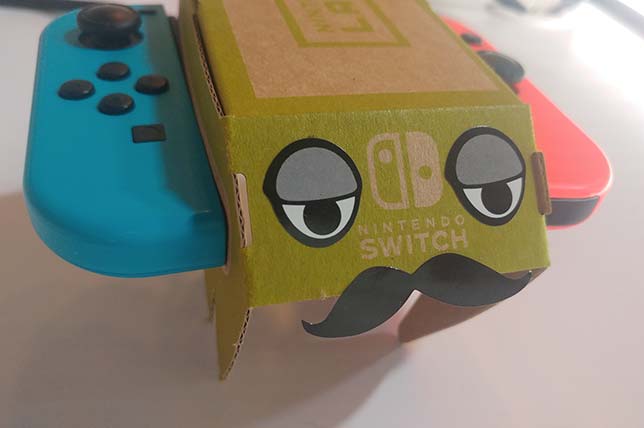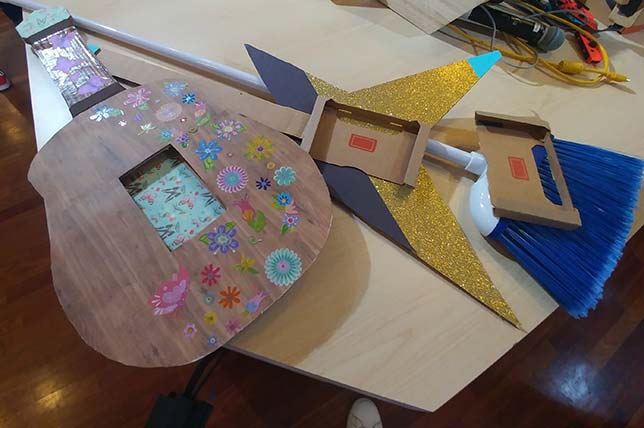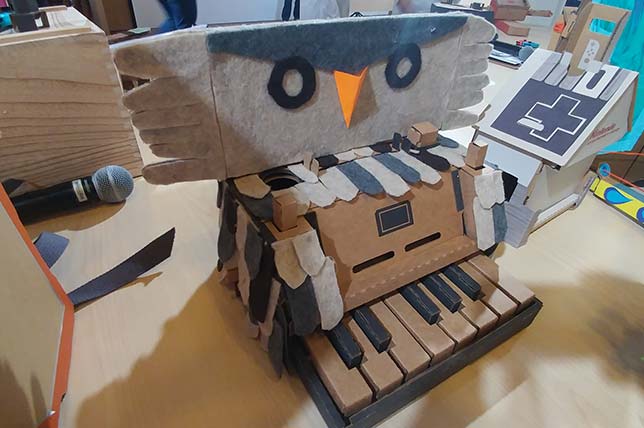Nintendo Reveals Toy-Con Garage Invention System for Labo
Nintendo plans to release the highly anticipated Labo for Switch gaming systems April 20. Today at an event in San Francisco, the company revealed a unique component that adds a new dimension of invention and node-based coding to the mixed-reality system — Toy-Con Garage.
To backtrack for those unfamiliar with it, Nintendo Switch is a gaming platform that's designed to operate as both a console and a handheld system. Earlier this year it became the fastest-selling console system ever in the United States and is expected to sell 20 million units in 2018.
Labo is a unique system for Switch that brings mixed-reality capabilities to the platform, allowing users to build interactive devices out of cardboard that can not only interact with games and other content on the screen but can be interacted with. For example, users can build a car out of cardboard that can actually move using vibration controlled through the Switch's touchscreen. Similarly, they can build a fully functional keyboard out of cardboard and use it to play music through the Switch. Various toggles can be added to the keyboard for controlling voice, pitch and other elements. All out of cardboard (well, that and a little IR-reflective tape).
In April, two Labo kits will be released: Robot Kit and Variety Kit. (A Customization Set will also be available. That is essentially stickers and other decorative elements for Labo constructions.) The Robot Kit allows users to build elements that allow users to control a robot in a video game using their full body. The Variety Kit includes several kits for a range of objects shown in the video above — the two RC Cars, a complete Fishing Rod, the House, the Motorbike and the Piano. The (expertly decorated) moving car I built shown in the photo below. Both kits include software and all the necessary materials.

Now, in addition to all that, Nintendo has revealed Toy-Con Garage. This is a system — accessed in Discover mode when using the Labo software — that lets users design their own mixed-reality interfaces using cardboard (or really any object, as Nintendo demonstrated using everyday objects) and to customize the functioning of the objects they build using the official kits (such as creating custom fish for the fishing game or using the fishing reel as a musical instrument.


In order to make the objects work, Nintendo provides a sort of coding studio that lets users create input and output nodes. An example of an input node might be "push button on blue controller." An output might be "play sound" or "vibrate red controller." By connecting the input to an output (or more than one output), the effects can be created.
The controllers themselves have sensors that can also be used as inputs. For example, one of the controllers has an IR motion sensor. That's also an input. When IR is reflected back at the sensor, that can trigger an action. Because it's a motion sensor, it can be used for rotating and sliding inputs as well (as with the case of pitch modulation on the Labo piano). Moving objects can also be set to follow IR-reflective objects.
Not all of the details about the Toy-Con Garage have been revealed, but we'll post updates as more information becomes available. Curriculum for the system has not yet been announced. Labo is available now for preorder for $69.99 for 4the Variety Kit and $79.99 for the Robot Kit. Further details can be found at labo.nintendo.com.